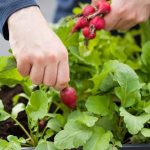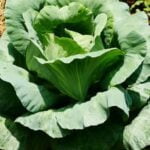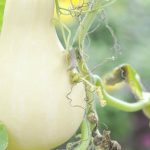Are you looking to add fresh, home-grown produce to your summer meals? Gardening summer harvested vegetables is a great way to enjoy the benefits of delicious and nutritious food straight from your own backyard. From improved health to cost savings, there are numerous advantages to growing your own summer vegetable garden.
By planning and preparing your garden for summer vegetable crops, you can ensure a bountiful harvest of top-quality produce. Knowing which vegetables thrive in the summer months and understanding the best practices for planting, maintaining, and harvesting these crops can make a significant difference in the success of your garden.
In this article, we will explore the various aspects of gardening summer harvested vegetables. From practical tips for growing a thriving garden to creative ways to use and preserve your bounty, you’ll discover everything you need to know about cultivating and enjoying your own fresh summer produce. Whether you’re a seasoned gardener or just getting started, there’s something for everyone in this comprehensive guide to gardening summer harvested vegetables.
Planning and Preparing Your Garden for Summer Vegetable Crops
Summer is a great time for gardening, especially if you’re planning to harvest some delicious vegetables. However, before you can enjoy the fruits of your labor, it’s essential to plan and prepare your garden properly.
One of the first steps is to choose the right location for your summer vegetable crops. Most vegetable plants require at least 6-8 hours of sunlight per day, so make sure to select a spot in your garden that receives plenty of sunshine.
Once you’ve chosen the location, it’s time to prepare the soil. Start by removing any weeds and adding organic matter such as compost or aged manure to improve soil fertility.
Testing the soil pH can also be beneficial, as most vegetables prefer a slightly acidic soil with a pH between 6.0 and 7.0. After preparing the soil, consider creating raised beds or using containers for your summer vegetable garden, as they can provide better drainage and make it easier to control weeds.
Finally, when planning your garden layout, consider companion planting to maximize space and deter pests naturally. Some vegetables grow well together and can benefit from each other’s presence when planted side by side. By following these steps and adequately planning and preparing your garden for summer vegetable crops, you’ll be on your way to a bountiful harvest in no time.
| Vegetable | Best Growing Conditions |
|---|---|
| Tomatoes | Full sun; Well-drained soil with plenty of organic matter |
| Zucchini | Rich, fertile soil; regular watering; full sun |
| Cucumbers | Warm temperature; consistent moisture; support for climbing vines |
Top 10 Summer Vegetables to Grow in Your Garden
When it comes to gardening, summer is a perfect time to harvest a variety of delicious and nutritious vegetables. Whether you are an experienced gardener or just starting out, growing your own summer vegetables can be a rewarding and beneficial activity. Not only does it provide you with fresh produce, but it also allows you to connect with nature and enjoy the therapeutic benefits of gardening.
One of the top 10 summer vegetables to grow in your garden is tomatoes. Tomatoes thrive in the warm summer months and are versatile enough to be used in salads, sauces, and other dishes. Another excellent choice is zucchini, which is easy to grow and produces abundant yields.
Other popular summer vegetables include cucumbers, peppers, eggplants, green beans, carrots, lettuce, radishes, and spinach. These vegetables are not only tasty but also packed with essential nutrients that are beneficial for your health.
In addition to providing you with fresh produce all season long, growing your own summer vegetables can also help reduce your carbon footprint by minimizing the need for transportation and packaging. It also encourages a sense of community as you can share your bountiful harvest with friends, family, and neighbors.
By growing your own food, you are contributing to a more sustainable and eco-friendly way of living. So consider planting these top 10 summer vegetables in your garden for a bountiful harvest that will not only benefit you but also the environment.
| Summer Vegetable | Benefits |
|---|---|
| Tomatoes | Versatile in cooking; rich in vitamins A & C |
| Zucchini | Easy to grow; high yield crop |
| Cucumbers | Refreshing addition to salads; high water content |
Tips for Planting, Maintaining, and Harvesting Your Summer Vegetable Garden
When it comes to gardening summer harvested vegetables, proper planning, maintenance, and harvesting techniques are crucial for a bountiful and successful yield. Here are some tips for planting, maintaining, and harvesting your summer vegetable garden:
1. Proper Planning: Before planting your summer vegetables, ensure that you have the appropriate space, soil, and sunlight for each type of vegetable. Consider creating a gardening calendar to keep track of the planting and harvesting schedule for each vegetable.
2. Maintenance: Regularly water your garden to keep the soil moist but not waterlogged. Use organic fertilizers to provide essential nutrients to your plants. Mulching can also help conserve moisture in the soil and prevent weed growth.
3. Harvesting: It is important to harvest your summer vegetables at the right time to ensure peak flavor and freshness. Some vegetables like tomatoes should be picked once they have reached their full color and are firm to the touch, while others like zucchinis should be harvested while young and tender.
By following these tips, you can ensure that your summer vegetable garden thrives and provides a plentiful harvest of fresh and delicious produce.
– Remember to rotate your crops each season to prevent depletion of nutrients in the soil.
– Use companion planting techniques to naturally repel pests and encourage healthy growth.
– Consider investing in some quality gardening tools to make planting, maintaining, and harvesting more efficient.
With these tips in mind, you can look forward to enjoying a successful and rewarding summer vegetable garden.
Dealing With Common Pests and Diseases in Summer Vegetable Gardens
Identifying and Preventing Pests and Diseases
One of the major challenges in gardening summer harvested vegetables is dealing with common pests and diseases. It is important to regularly inspect your plants for any signs of infestation or infection. Look out for holes in leaves, wilting, discoloration, or any unusual growth patterns. By catching these issues early on, you can prevent them from spreading to other plants in your garden.
There are various preventative measures you can take to protect your summer vegetable garden from pests and diseases. These include using natural deterrents such as companion planting, introducing beneficial insects like ladybugs, and practicing crop rotation. Additionally, maintaining proper soil health through organic fertilization can help strengthen your plants’ immune systems against diseases.
Natural Remedies for Pest Control
In the event that your summer vegetable garden does experience a pest infestation, there are natural remedies that can be used to address the issue. For example, creating homemade insecticidal sprays using ingredients like neem oil or garlic can effectively control common garden pests without harming beneficial insects. Similarly, companion planting certain herbs and flowers like marigolds or lavender can repel pests through their natural fragrances.
It’s also important to regularly remove any diseased or infected plant material from your garden to prevent the spread of disease. Proper sanitation practices go a long way in maintaining the overall health of your summer vegetable crops.
Seeking Professional Advice
If you find that your efforts to control pests and diseases in your summer vegetable garden are not yielding results, don’t hesitate to seek professional advice from local gardening experts or agricultural extension services. They can provide valuable insights tailored to your specific gardening environment and offer recommendations for organic solutions that are safe for both your plants and the environment.
Creative and Delicious Ways to Use Your Summer Harvested Vegetables
When your summer vegetable garden is thriving, you may find yourself with an abundance of delicious produce. Finding creative and delicious ways to use your summer harvested vegetables can be a fun and rewarding part of gardening. Here are some ideas to inspire you:
1. Grilling: Many summer vegetables, such as zucchini, peppers, and eggplant, are excellent when grilled. Simply brush them with olive oil, sprinkle with salt and pepper, and cook them on a hot grill until they are tender and slightly charred.
2. Salads: Freshly harvested tomatoes, cucumbers, and lettuce make for the perfect base for a variety of refreshing salads. Add in some herbs from your garden like basil or cilantro for extra flavor.
3. Salsas and Chutneys: Use your ripe tomatoes, onions, peppers, and cilantro to make a flavorful salsa that goes well with grilled meats or as a dip for chips. You can also experiment with making chutneys using fruits like peaches or berries combined with your harvested vegetables.
4. Stir-fries and Sautees: Incorporate your summer vegetables into quick stir-fries or sautés for a healthy and delicious meal. Try using squash, green beans, or snap peas alongside other proteins like tofu or chicken.
5. Preserving: If you have a surplus of vegetables, consider preserving them for later use by pickling or making homemade sauces and salsas.
By getting creative in the kitchen with your summer harvested vegetables, you can fully appreciate the fruits of your labor in the garden while enjoying fresh and nutritious meals all season long.
The Importance of Proper Storage and Preservation for Summer Harvested Vegetables
Proper storage and preservation of summer harvested vegetables is essential for maximizing the freshness and flavor of your bountiful harvest. Without proper techniques, your hard work in the garden could go to waste as vegetables spoil quickly in the summer heat. In this section, we will discuss some important tips for storing and preserving your summer vegetables to ensure they can be enjoyed long after they are harvested.
Proper Storage Techniques
After harvesting your summer vegetables, it’s important to store them properly to maintain their freshness. For example, root vegetables such as carrots and beets should be stored in a cool, dark place with high humidity to prevent them from drying out. On the other hand, tomatoes and cucumbers should be kept at room temperature to ripen fully before being transferred to the refrigerator for longer storage.
Preservation Methods
In addition to proper storage, there are various methods for preserving your summer vegetables so that you can enjoy them throughout the year. Canning is a popular option for preserving tomatoes, peppers, and other vegetables in the form of sauces or salsas. Freezing is another effective method for preserving a wide variety of summer vegetables such as green beans, corn, and zucchini.
Tips for Maintaining Freshness
To maintain the freshness of your summer harvested vegetables, it’s important to handle them carefully during harvesting and storage. Avoid bruising or damaging the produce as this can accelerate spoilage. Additionally, regularly inspect stored vegetables for any signs of rot or mold and remove any affected items immediately to prevent contamination of others. By following these tips for proper storage and preservation, you can make the most of your gardening efforts and enjoy delicious homegrown produce all year round.
Community and Environmental Benefits of Growing Your Own Summer Vegetables
Gardening summer harvested vegetables not only provides a plethora of benefits for individuals and families, but it also has a positive impact on the community and the environment. By growing your own summer vegetables, you are contributing to a healthier and more sustainable food system. You are also creating a sense of community by sharing your harvest with friends, family, or local organizations.
One of the key environmental benefits of growing your own summer vegetables is the reduction of carbon footprint. By eliminating the need for transportation from farm to table, you are reducing greenhouse gas emissions. Additionally, growing your own food allows you to make environmentally friendly choices in terms of soil health, water usage, and pesticide use.
Community gardens have been shown to bring people together and create a sense of belonging among neighbors. By participating in or starting a community garden focused on summer vegetable crops, you can create opportunities for social interaction while fostering a stronger sense of community. It also provides access to fresh produce for those who may not have their own garden space.
In conclusion, gardening summer harvested vegetables goes beyond personal satisfaction and health benefits. It also has far-reaching effects that benefit the environment and the community as a whole. Whether it’s through individual gardening efforts or participating in community gardens, each person’s contribution makes a difference in building a more sustainable and connected world.
Frequently Asked Questions
What Vegetables Can Be Harvested in Summer?
In the summer, a variety of vegetables can be harvested such as tomatoes, cucumbers, peppers, zucchini, corn, green beans, and eggplant. These vegetables thrive in the warm temperatures and longer daylight hours.
What Produce Is Harvested in Summer?
During the summer months, a wide range of produce is harvested including fruits like strawberries, blueberries, blackberries, raspberries, peaches, watermelon, and cantaloupe. Additionally, summer also brings in a bountiful supply of fresh herbs like basil, mint, dill, and cilantro.
What Vegetables Are Harvested in July?
July is the peak time for harvesting several delicious vegetables such as sweet corn, tomatoes, bell peppers, zucchini, yellow squash, cucumbers, green beans, and eggplant. These vegetables are at their freshest and most flavorful during this time of year.

If you’re looking to get into vegetable gardening, or are just looking for some tips on how to make your current garden better, then you’ve come to the right place! My name is Ethel and I have been gardening for years. In this blog, I’m going to share with you some of my best tips on how to create a successful vegetable garden.





